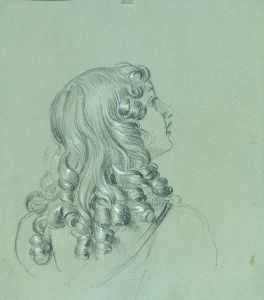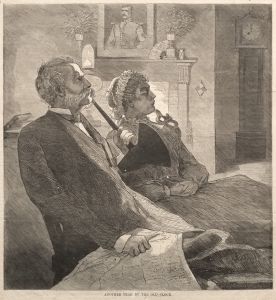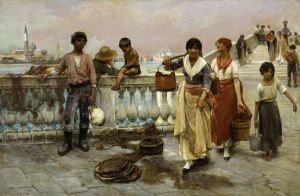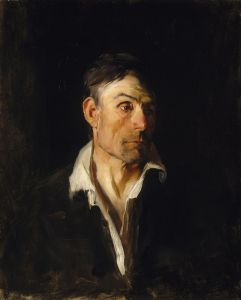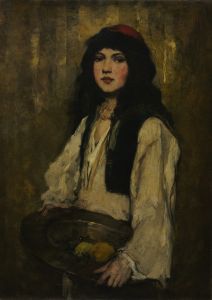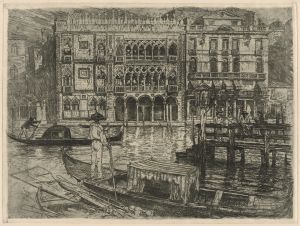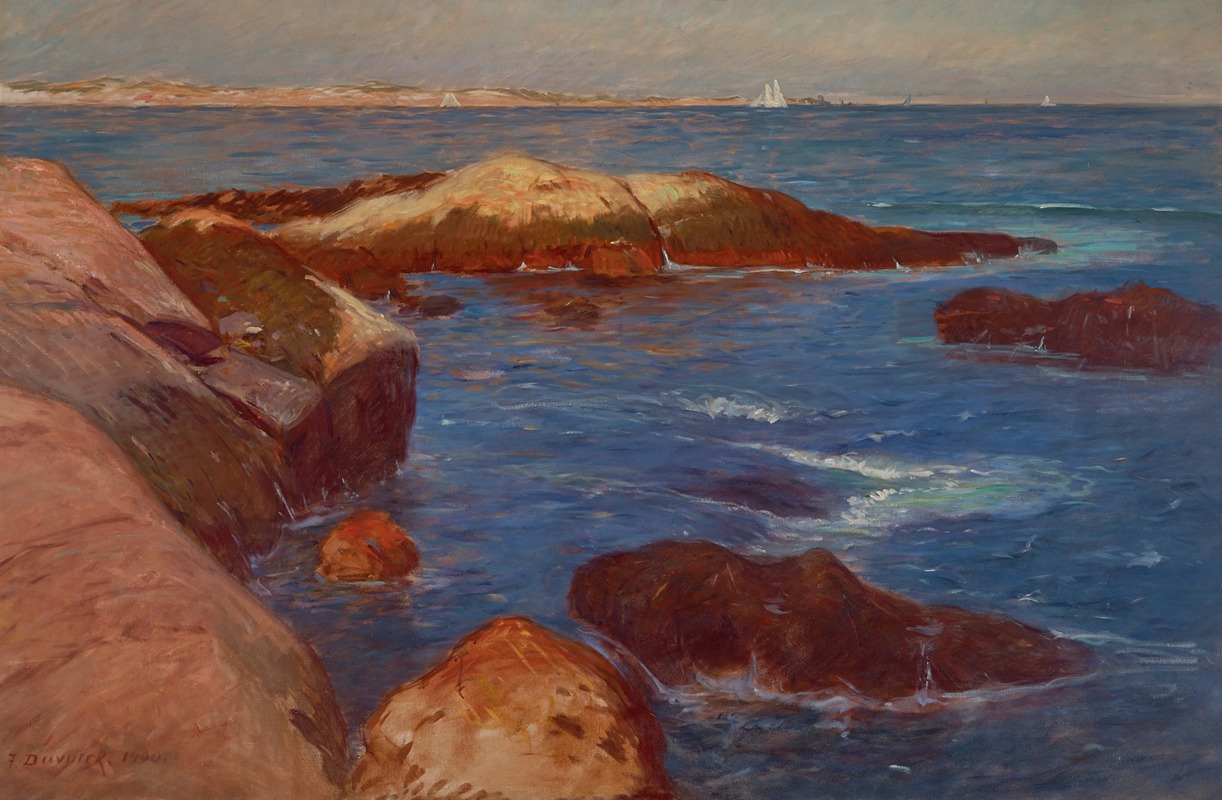
Marine
A hand-painted replica of Frank Duveneck’s masterpiece Marine, meticulously crafted by professional artists to capture the true essence of the original. Each piece is created with museum-quality canvas and rare mineral pigments, carefully painted by experienced artists with delicate brushstrokes and rich, layered colors to perfectly recreate the texture of the original artwork. Unlike machine-printed reproductions, this hand-painted version brings the painting to life, infused with the artist’s emotions and skill in every stroke. Whether for personal collection or home decoration, it instantly elevates the artistic atmosphere of any space.
Frank Duveneck's "Marine" is an exemplary piece of late 19th-century American art, showcasing the artist's adept skill in capturing the essence of maritime scenes. Frank Duveneck (1848–1919) was an influential American painter and art instructor, known for his vigorous brushwork and keen ability to convey mood and atmosphere. He was a pivotal figure in the American art scene, particularly recognized for his role in the Munich School and his influence on the American Impressionist movement.
"Marine" is one of Duveneck's works that exemplifies his interest in marine subjects, a theme that was popular among artists of his time. The painting reflects Duveneck's exposure to European art and his ability to integrate these influences into his work. Duveneck spent several years in Europe, where he studied at the Royal Academy of Munich and was influenced by the dark tonalities and realistic portrayals of the Munich School. His time in Europe also exposed him to the works of the Old Masters and contemporary European artists, which informed his style and technique.
The painting "Marine" is characterized by its dynamic composition and the use of light and shadow to create depth and movement. Duveneck's brushwork is both bold and fluid, capturing the ever-changing nature of the sea. The painting likely depicts a scene along the coast, with the interplay of natural elements such as water, sky, and light forming the central focus of the composition. This approach reflects the broader 19th-century artistic interest in naturalism and the exploration of light, which were central to the Impressionist movement.
Duveneck's ability to convey the mood of the scene is evident in "Marine," as he uses a palette that ranges from deep blues and greens to lighter, more ethereal tones. This color scheme not only captures the physical appearance of the sea but also evokes an emotional response from the viewer, a testament to Duveneck's skill as a painter.
Throughout his career, Duveneck was known for his versatility and ability to work across different genres, including portraiture, landscapes, and genre scenes. His marine paintings, however, hold a special place in his oeuvre as they demonstrate his mastery of capturing the transient and often tumultuous nature of the sea. "Marine" is a reflection of Duveneck's artistic philosophy, which emphasized direct observation and the importance of capturing the essence of the subject matter.
Frank Duveneck's contributions to American art extend beyond his paintings. As a teacher, he influenced a generation of artists, including notable figures such as John Henry Twachtman and Joseph DeCamp. His legacy is preserved in numerous collections across the United States, and his works continue to be studied and appreciated for their technical proficiency and emotional depth.
In summary, "Marine" by Frank Duveneck is a significant work that highlights the artist's skill in depicting maritime scenes with a blend of realism and impressionistic techniques. It stands as a testament to Duveneck's impact on American art and his ability to capture the beauty and power of the natural world.






